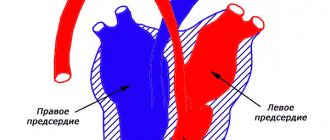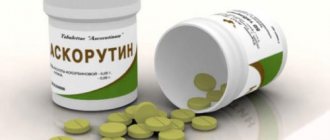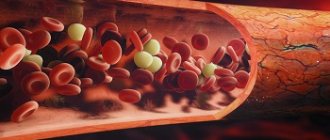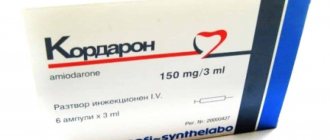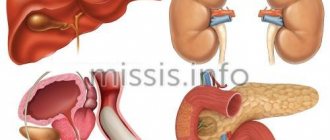Detailed description of the study
Fibrinogen, or factor I, is a plasma protein that is produced in the liver and plays an important role in the blood clotting process (hemostasis). Through various interactions, it plays an important role in stopping bleeding.
Fibrinogen is able to dissolve in plasma and serves as a precursor to the insoluble protein fibrin. The process of converting fibrinogen into fibrin, as well as the adhesion (aggregation) of platelets, is carried out with the help of three main enzymes that regulate hemostasis - thrombin, plasmin and factor XIIIa.
As a result, a blood clot is formed, consisting of fibrin strands and an accumulation of platelets. This helps stop bleeding effectively. The fibrin clot also activates the fibrinolytic system. This maintains a balance between blood clotting and protection against blood clots.
The amount of fibrinogen in the body may vary among individuals depending on age and gender. A physiological increase in the concentration of this protein is observed in pregnant women. Its level may also increase with age.
Pathological conditions that change the fibrinogen content in the body are divided into congenital and acquired. The first group of diseases is associated with mutations in genes. Some of them lead to fibrinogen deficiency in the blood, others increase its level. The presence of single mutations in the genes encoding the formation of this protein may not have any symptoms, but increases the risk of thrombosis with unfavorable concomitant factors.
Acquired diseases in which fibrinogen concentration increases primarily include infectious or other diseases accompanied by inflammation. Among them one can also note diabetes mellitus and obesity. Injuries and burns increase fibrinogen production, which is necessary to stop bleeding. An increased content of this protein is observed during pregnancy, as well as when taking estrogen hormones.
A decrease in fibrinogen levels is caused by a violation of its formation in the liver or accelerated destruction in the blood (fibrinolysis). However, in most pathological conditions (acute and chronic inflammation, trauma, burns, surgical interventions), this indicator becomes higher than normal.
Determining the amount of fibrinogen in plasma is necessary in order to assess blood clotting ability and, if necessary, carry out treatment to normalize hemostasis.
What is fibrinogen?
Fibrinogen is a protein that is one of the main blood clotting factors. It is necessary for the formation of blood clots and stopping bleeding, helps in the healing of damaged tissues and restoration of their blood supply. When the walls of blood vessels of any size are damaged, a cascade of biochemical reactions is triggered in the blood, the final result of which is the conversion of fibrinogen into fibrin. A blood clot forms. Almost immediately after this, another cascade of reactions is launched - the anticoagulation system of the blood.
Fibrinogen is synthesized by liver cells and is constantly present in the blood in a certain concentration. When the vascular wall is damaged, it is converted into fibrin, with the help of the enzyme thrombin, which forms polymers in the form of white threads - they are part of the blood clot. Changes in the concentration of fibrinogen in the blood threaten bleeding or thrombosis.
During pregnancy, about 600 ml of blood passes through the vessels of the placenta every minute. After the placenta separates and is delivered during labor, the lining of the uterus is left with a bleeding surface. During childbirth, a woman loses about 500 ml of blood (during a caesarean section, twice as much - an average of 1000 ml). But then the uterus contracts, the blood vessels contract, and the bleeding stops. It is very important that there is a balance in the functioning of the blood coagulation and anticoagulation systems.
During pregnancy, under the influence of hormones, the blood coagulation system is activated. The body is, as it were, “preparing” to cope with physiological blood loss at a crucial moment.
The level of fibrinogen in the blood of the expectant mother gradually increases and in the third trimester increases 2-3 times compared to normal values. This happens under the influence of hormones.
Fibrinogen - role and norm in the blood (Fibrinogen, FF, FA)
Fibrinogen is a soluble plasma protein synthesized in the liver and is directly involved in the formation of a thrombus (blood clot) after a violation of the integrity of the vascular wall. This indicator is determined in a coagulogram (hemostasiogram) - a special test for clotting.
Under the influence of special factors, Fibrinogen at the site of damage to the blood vessel is converted into insoluble fibrin. Its threads intertwine with each other and create a dense network, to which, as if on a filter, platelets settle and create a durable temporary patch to stop bleeding. The lower the FF level, the longer it takes for a blood clot to form. The norm is from 2 to 4 g/l. A change, either upward or downward, is fraught with serious consequences.
A decrease in concentration is observed in the case of:
- Liver failure (loss of the ability to synthesize the required amount of proteins due to hepatitis or cirrhosis);
- Poisoning with snake venom;
- Deficiency of ascorbic acid and vitamin B12;
- Long-term infusion therapy or after massive transfusion of blood-substituting solutions and components;
- Pathological intravascular coagulation (DIC syndrome).
The consequences of low fibrinogen are:
- Risk of hemorrhage;
- Hemorrhagic stroke;
- Blood loss during invasive interventions;
- Bleeding gums;
- Hemoptysis;
- The appearance of bloody impurities in the stool;
- Difficult to stop bleeding from wounds and abrasions.
There are a sufficient number of reasons leading to an increase in concentration:
- Loss of body fluids (vomiting, diarrhea, polyuria, superficial extensive burns);
- Malignant neoplasms, systemic tumor processes;
- The presence of acute inflammation or exacerbation of chronic;
- Hormonal therapy (contraceptives).
High Fibrinogen increases the risk of pathological clots, especially against the background of atherosclerotic damage to blood vessels. It leads to:
- Myocardial infarction and other cardiovascular diseases;
- Ischemic stroke;
- Thrombosis of internal organs and limbs.
There are no specific signs of high or low FA, so its determination should always be carried out before planning any surgical interventions, as well as in the case of increased bleeding, the presence of ischemic symptoms of any localization, and after severe infections.
Decoding the results
The coagulogram includes the following indicators:
1. Activated partial thromboplastin time (aPTT). They evaluate how quickly a blood clot forms after adding special reagents to it. This indicator is measured in seconds. APTT shows the effectiveness of stopping bleeding using plasma clotting factors that are produced in the liver. An increase in this indicator indicates an increased risk of bleeding, and a decrease indicates thrombosis. This indicator is especially important for patients who take heparin and other anticoagulants.
2. Prothrombin time (PT). This is an indicator of the time during which fibrin filaments are formed in the blood, which are the precursors of a blood clot. The higher this indicator, the higher the likelihood of blood clots and the risk of thrombosis. A decrease in PT indicates an increased likelihood of bleeding.
3. INR. This is an indicator intended to standardize information about PV that was obtained using different equipment. Knowing the prothrombin time indicators is necessary for the selection and correction of therapy with anticoagulants. But until relatively recently, the data from this study, obtained in different laboratories, did not make it possible to conduct a correct analysis. Therefore, in the eighties of the last century, the use of INR (international normalized ratio) was introduced. In essence, this is a mathematical correction, with the help of which the PV measured in different laboratories is standardized to one standard.
4. Fibrinogen. This is a substance necessary for the formation of a blood clot. The norms for it are measured in grams per liter. An increase in fibrinogen content may indicate not only a high risk of blood clots, but also the presence of an inflammatory process in the body. In addition, this indicator may be increased in pregnant women, smokers, patients with high cholesterol levels, as well as in women taking oral contraceptives. A decrease in fibrinogen levels may indicate not only the risk of bleeding, but also liver pathologies.
Fibrinogen
Determination of fibrinogen content in human blood plasma is one of the main tests in the study of hemostasis. Elevated fibrinogen levels have been associated with an increased risk of thrombosis in some epidemiological studies. In addition to its coagulological function, fibrinogen is involved in wound healing and the pathogenesis of malignant neoplasms. Fibrinogen is a euglobulin, an acute phase protein and a glycoprotein with a molecular weight of 340,000 D.
Fibrinogen is the only substrate from which, under the influence of thrombin, the fibrin basis of a blood clot (thrombus) is formed, which ensures complete hemostasis. Fibrinogen is synthesized in the parenchymal cells of the liver and enters the blood.
Fibrinogen defects can be quantitative (hypo- or hyperfibrinogenemia) or qualitative (dysfibrinogenemia). Hereditary dysfibrinogenemia is extremely rare, but the acquired form is more common, especially in liver diseases.
Fibrinogen consists of three pairs of polypeptide chains: two Aa, two Bβ and two ƴ. They are linked together by disulfide bonds in such a way that the N-terminal portions of the 6-polypeptide chains meet to form the central E domain. The C-terminal regions (Aa, Bβ and γ) for the D domain are connected by alpha helical cables to the central E domain to give the characteristic structure of fibrinogen.
Under the influence of thrombin, fibrinogen is converted into fibrin. At the proteolytic stage of this transformation, fibrinopeptides A and B are cleaved from fibrinogen at the arginyl bonds in the N-terminal disulfide unit to form α- and β-chains of fibrin monomers. In the next polymerization phase, the monomers join together to form a fibrin network. At the final stabilization stage, under the influence of FXIII, covalent bonds are formed to form a stable fibrin network. The main mechanism of fibrin self-assembly is the non-covalent intermolecular binding of the complementary centers D1-E1 and D2-E2 of domains D and E.
Principles of methods:
There are a number of methods for determining plasma fibrinogen levels, although in practice most laboratories use the Clauss method.
| Method | Characteristic |
| Clauss method | Functional analysis based on the time of formation of a fibrin clot (see instructions for the Fibrinogen test. The clotting time of diluted* citrated blood plasma is measured by adding excess thrombin**. In this case, the time of formation of a fibrin clot depends only on the concentration of fibrinogen in the plasma, determined by the calibration chart of dilutions of the calibrator plasma with the established fibrinogen content. *Plasma is diluted, usually 10 times, to minimize the effect of “inhibiting substances.” This value depends on the coagulometer used and may change at very low or very high fibrinogen concentrations.* *The use of high activity thrombin ensures that clotting time is independent of thrombin activity over a wide range of fibrinogen concentrations. Most laboratories use an automated method in which clot formation occurs when the optical density of the mixture exceeds a certain threshold. |
| Analysis based on determination of prothrombin time. | In the PT test, a calibration graph is constructed of the dependence of the concentration of fibrinogen in dilutions of standard plasma on the change in optical density recorded by an automatic analyzer when recording clot formation. The concentration of fibrinogen in the test samples is calculated from the calibration graph. Since the method is an indirect measurement of fibrinogen, the choice of standard is very important. |
| Immunological method | The immunological method measures the level of fibrinogen antigen. It is advisable to use it with high levels of fibrinogen, or with congenital dysfibrinogenemia, where there is a discrepancy between functional activity and the level of fibrinogen antigen. |
| Gravimetric method | A method based on measuring the weight of a fibrin clot (according to Rutberg et al.), which is formed by adding either thromboplastin or thrombin and calcium to the plasma. To determine the fibrinogen concentration, the clot is blotted with filter paper, separating plasma and unused reagents, washed, and then weighed. This analysis is outdated, technically complex, time-consuming and not standardized. |
In this cascade diagram of blood coagulation, the factors of hemostasis that are reflected in determining the fibrinogen content using the Clauss method are highlighted in purple:
Reference values
normal range for fibrinogen is usually 2.0-4.0 g/L.
Interpretation of results:
A decrease in fibrinogen levels is observed:
— with DIC syndrome in the consumption stage (usually in combination with prolongation of APTT, PT, TV),
- for liver diseases due to decreased synthesis of blood clotting factors,
- with massive blood transfusions leading to dilution coagulopathy, - after thrombolytic therapy,
- with hereditary deficiencies of fibrinogen - hypo- or afibrinogenemia or dysfibrinogenemia, the latter is often associated with a decrease in fibrinogen levels.
Dysfibrinogenemia may also occur in patients with liver disease associated with abnormal increases in sialic acid. A decrease in fibrinogen levels below 1.0 g/l is a risk factor for bleeding.
An increase in fibrinogen levels is observed:
- in a healthy person, fibrinogen can increase after 60 years of age, during pregnancy, when taking oral contraceptives, during postmenopause,
- among smokers,
- in the intra- and postoperative period,
- for obesity, diabetes mellitus, atherosclerotic vascular lesions,
- with ischemic heart disease, especially with myocardial infarction,
- with DIC syndrome (in the hypercoagulation stage - often in combination with a shortening of APTT, PT, TV, etc.), with vascular thrombosis,
- for oncological, infectious, inflammatory, autoimmune and other conditions.
A high level of fibrinogen in the blood is an independent thrombogenic risk factor. An increase in fibrinogen concentration above 4.0 g/l is a prognostic indicator for the development of myocardial infarction, stroke, and peripheral arterial diseases.
What you need to know about Fibrinogen:
- Fibrinogen levels are usually interpreted in conjunction with other screening tests, such as APTT.
- If there is no obvious reason for the decrease in fibrinogen levels (for example, thrombolytic therapy) and there are certain clinical or anamnestic data (for example, a family history of bleeding diathesis, poor wound healing, umbilical cord bleeding), then to determine the nature of these disorders, use immunological analysis of fibrinogen.
- Fibrinogen blood testing, as with other baseline tests, should not be performed on specimens collected within 4 hours of therapeutic doses of unfractionated heparin (UFH) to avoid false results.
- High concentrations of UFH (>0.8 IU/ml) may lead to an underestimation of the true fibrinogen level.
When preparing this section, data from the scientific website www.practical-hemostasis.com was used.
Complexes with this research
Extended coagulogram Extended study of the functional state of hemostasis 4,230 ₽ Composition
Examination during pregnancy. 3rd trimester 9,840 ₽ Composition
Expanded hospital complex Expanded infectious screening for prevention and hospitalization 7,890 ₽ Composition
IN OTHER COMPLEXES
- Men's check-up No. 1 RUB 18,920
- Pregnancy planning. Clinical indicators 6,800 ₽
- For those at risk of COVID-19 RUB 4,620
- Preventive check-up 6,300 ₽
- Examination during pregnancy. 1st trimester 17,040 RUR


